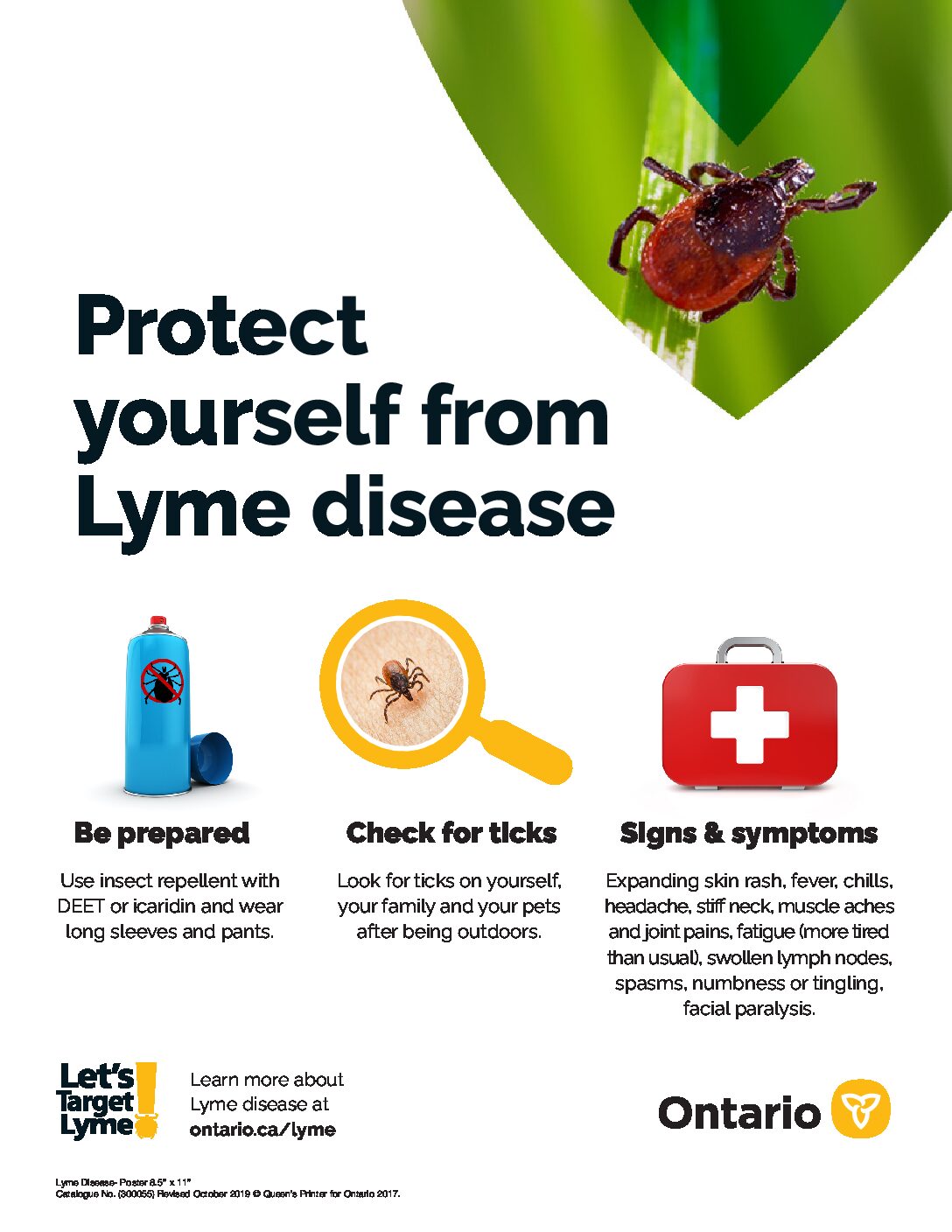As the weather becomes warmer, and we venture forth into nature, we must be wary of picking up unwanted guests – ticks. Ticks bury their heads into the skin of a host’s body to drink blood and are known for spreading Lyme disease and other vector borne illnesses. While research on ticks and Lyme disease are ongoing, many people have suffered in pain because much is not well-known. Please be aware of ticks, and the harm they might cause, as we become more active in the warmer seasons.
What should I do if I find a tick?
If you find a tick, properly remove it as soon as possible. Ticks can stay attached to skin for five or more days. Removing a tick within a few hours can help prevent Lyme disease, but not always. It is recommended that if you are bit by a tick that you seek assistance from a healthcare professional.
Lyme Disease Symptoms
If you’re experiencing a combination of these symptoms, see your doctor immediately. Symptoms might not appear for weeks or even months after being bitten!
• Rash • Fever • Headache • Numbness in face or limbs • Nausea • Jaw pain • Burning sensations • Light sensitivity Red eyes • Muscle aches • Neck stiffness • Difficulty breathing or getting air • Anxiety • Muscle twitching • Bone or joint pain • Swollen lymph nodes
Early detection of Lyme disease is very important. If you have been exposed to a tick bite and have symptoms, seek medical attention right away. Early stage Lyme disease can be easily treated with antibiotics while late stage Lyme disease is much harder to treat.
Tick Removal
Proper tick removal is key to lowering the risk of Lyme disease. Ideally, the tick is removed whole, and intact to prevent further Lyme bacteria from entering your bloodstream.
• Use fine-tipped tweezers to grasp the tick close to the skin surface.
• Pull upward with steady, even pressure – try not to twist or jerk.
• Inspect the area to ensure the tick is removed completely.
• Clean the bite area and your hands with rubbing alcohol, an iodine scrub, or soap and water.
How can I prevent a tick bite and Lyme disease?
• Wear long sleeves and pants
• Pull socks over pants preventing access
• Use DEET bug spray
• Stick to the trail and cleared areas
• Wear light coloured clothing so they are easier to spot on your body
• When you take a break, check your clothes and entire body for ticks. Make sure to check all over your head, neck and behind the ears
• Do an extra-thorough check at the end of the day
• Purchase an effective tick remover
• If you have a pet, check them for ticks before they come into the house after being outside
Additional Resources

